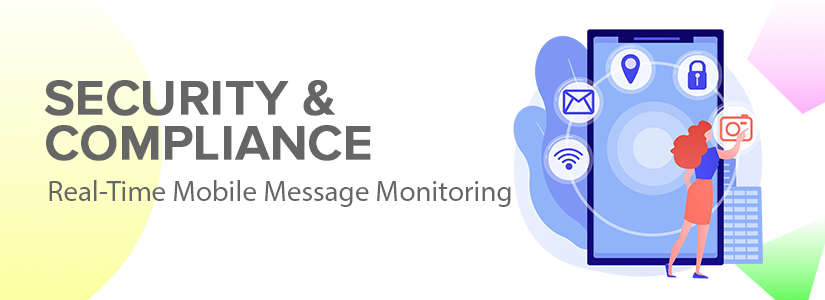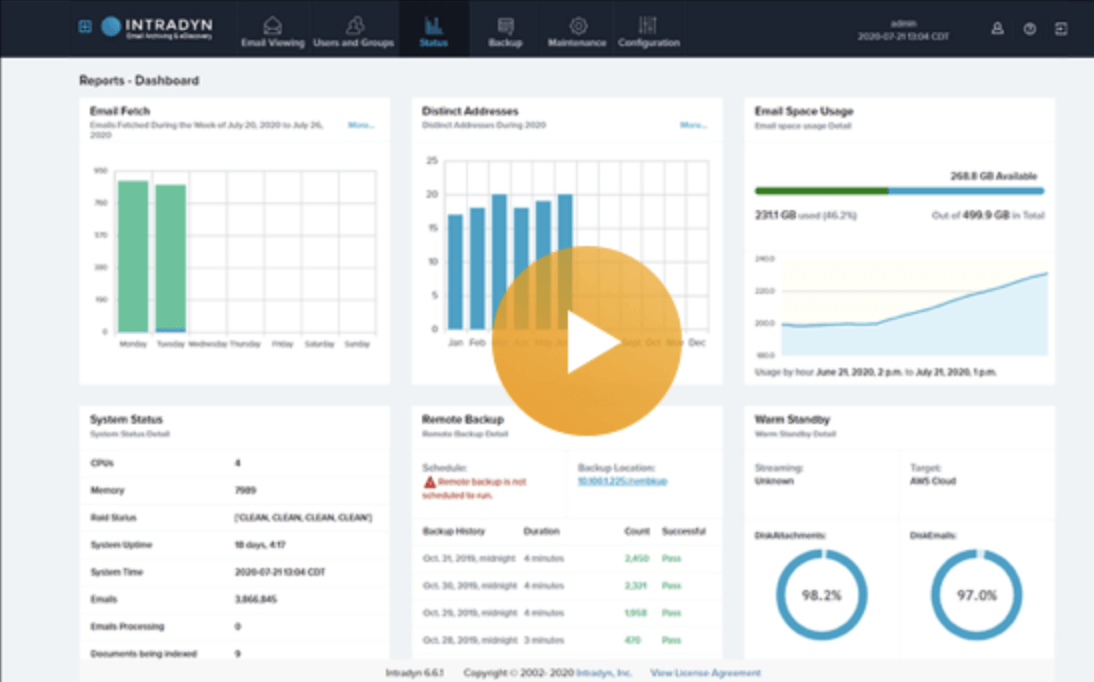Real-Time Mobile Message Monitoring for Security and Compliance

Mobile messaging is a crucial part of modern communication, making it essential for security and compliance monitoring. Governments, corporations, and law enforcement agencies rely on real-time mobile message monitoring to detect threats, prevent cyberattacks, and ensure regulatory compliance. With fast-paced innovations in digital technology, real-time monitoring provides valuable insights that help mitigate risks and enhance security strategies.
Here’s what it can do:
- Identify possible security risks before they become serious issues
- Maintain compliance with industry regulations and policies
- Safeguard private business and personal data from breaches
- Assist law enforcement in investigations when needed
In this article, we will explore:
- The importance of real-time message monitoring and how it works
- The key advantages of implementing message surveillance
- Industries that depend on real-time monitoring for security and compliance
- Best practices for mobile message monitoring
- What the future holds for this technology
What is Real-Time Monitoring?
Real-time message monitoring is the continuous monitoring of mobile messages that ensures the immediate identification of any suspicious or unauthorized activity. By diligently assessing messages as they are delivered or received, organizations can swiftly manage the risk of security breaches, regulatory noncompliance, or other potential threats. This ensures the protection of sensitive data and maintains operational integrity.
Unlike retrospective message analysis, which reviews messages after they have been received or stored, real-time monitoring provides a proactive approach, enabling organizations to prevent security incidents before they escalate. This feature is particularly crucial in industries such as finance, healthcare, and legal services, where the handling of sensitive data and adherence to stringent data security and regulatory compliance standards are paramount.
How Real-Time Monitoring Works
Effective security and compliance management relies on continuous monitoring of communication channels, which play a vital role in identifying and addressing security risks as they arise
The following processes illustrate how real-time monitoring enhances security and compliance across communication channels:
1. Message Capture and Analysis
- Captures messages across SMS, chat apps, and multimedia platforms.
- Uses AI-driven algorithms to detect security risks and compliance violations.
2. Automated Alerts and Notifications
- Sends real-time alerts when suspicious content is detected.
- Enables swift action against potential security threats.
3. Integration with Broader Security Systems
- Works alongside email monitoring, call tracking, and network security tools.
- Strengthens overall surveillance efforts by creating a comprehensive security strategy.
4. Data Encryption and Privacy Protection
- Ensures all captured messages and data are securely encrypted.
- Protects sensitive information from unauthorized access.
5. Advanced Threat Detection
- Utilizes machine learning to recognize evolving and sophisticated threats, including phishing, malware, and fraud attempts.
- Continuously updates threat models to stay ahead of new security risks.
6. User Access Controls and Permissions
- Provides customizable access levels for different users, ensuring only authorized personnel can view or act upon sensitive data.
- Tracks user actions and provides audit logs for accountability.
7. Compliance Reporting and Documentation
- Generates automated reports to assist with regulatory compliance (GDPR, HIPAA, FIPPA, etc.).
- Offers detailed documentation of message capture and analysis for legal or audit purposes.
8. Cloud and On-Premises Deployment Options
- Allows flexible deployment, offering both cloud-based and on-premises solutions to meet diverse organizational needs.
- Ensures scalability and adaptability in various environments.
9. Real-time Monitoring Dashboards
- Provides interactive dashboards for visualizing security metrics, alerts, and trends in real-time.
- Helps security teams to quickly assess the overall security posture and take necessary actions.
10. Contextual Analysis and Threat Correlation
- Leverages AI to analyze the context of messages and identify potential risks based on communication patterns, user behavior, and historical data.
- Correlates events across multiple channels to identify coordinated attacks.
Key Benefits of Real-Time Monitoring for Mobile Messages
By actively tracking communications, businesses can strengthen their cybersecurity, secure proprietary information, and assist law enforcement in criminal investigations. This comprehensive approach helps mitigate risks, ensuring both internal and external threats are effectively addressed.
Strengthening Cybersecurity
- Effective cybersecurity measures help prevent cyberattacks like phishing and malware by identifying suspicious behavior patterns in messages. Additionally, they reduce the risk of data breaches and unauthorized access, keeping sensitive information safe.
Enhancing Corporate Security
- Companies can protect themselves from both internal and external threats by monitoring for unauthorized data sharing. This facilitates the prevention of insider threats while securing proprietary business information from leaks.
Supporting Law Enforcement Efforts
- Real-time monitoring supports law enforcement in tracking illegal activities by providing valuable evidence and insight into communications. It helps authorities quickly identify perpetrators and gather necessary information for investigations.
Ensuring Compliance with Regulations
- Adhering to industry regulations is essential for avoiding penalties and maintaining trust with customers. Real-time monitoring enables businesses to meet standards such as GDPR, HIPAA, and others, ensuring full legal and regulatory compliance. It also streamlines the process of generating compliance reports and audits.
Detect Threats Early
- Early threat detection allows businesses to identify and address security risks before they escalate into larger issues. By monitoring communication in real-time, potential threats like phishing, malware, or fraud can be flagged quickly. This proactive approach prevents significant damage while keeping systems secure.
Protect Sensitive Data
- Securing crucial data is essential to prevent unauthorized access and information leaks. Monitoring systems help protect confidential information by restricting unauthorized sharing and ensuring encryption. This minimizes the risk of data theft and maintains the integrity of personal and business data.
Leveraging real-time monitoring systems can help detect patterns of fraudulent behavior, flag inappropriate content, and even prevent data leaks before they occur. This level of oversight enhances security, improves operational efficiency, and ensures that businesses remain compliant with legal and industry-specific regulations.
Industries That Benefit from Real-Time Monitoring
Real-time monitoring is vital across various industries, offering targeted benefits to sectors that handle sensitive data and require high levels of security. Some organizations that benefit from this feature include:
- Financial Institutions – Detects fraudulent transactions and insider trading. Ensures compliance with financial industry regulations.
- Healthcare Organizations – Protects patient data and prevents data breaches. Maintain compliance with healthcare privacy laws.
- Government and Law Enforcement – Monitors potential national security threats. Helps law enforcement agencies track criminal networks.
- Corporate Enterprises – Prevents intellectual property theft. Secures business communication against cyber threats.
By adopting real-time monitoring, these industries can effectively address security threats, comply with regulations, and safeguard their operations, ultimately ensuring smoother and safer business practices.
Challenges and Ethical Considerations:
Given the growing concerns about data privacy, with 86% of Americans expressing worry and 79% concerned about how companies use their data, balancing monitoring with privacy rights is critical. Addressing the challenges of real-time monitoring is essential for maintaining security and integrity within organizations. Core issues to examine include:
- Privacy Concerns: Balancing effective monitoring with respect for individual privacy rights requires careful policy development and adherence to legal standards.
- Legal Compliance: Organizations must navigate complex legal landscapes to ensure that their monitoring practices are lawful and ethically sound.
- Managing False Positives: Implementing sophisticated AI-driven analysis can help minimize false alerts, ensuring that security teams focus on genuine threats.
The Future of Real-Time Mobile Message Monitoring
Innovations in real-time mobile message monitoring are shaping the future of communication across various sectors. The integration of AI and machine learning is enhancing monitoring accuracy, enabling more precise detection of threats and suspicious activities. Additionally, the adoption of Rich Communication Services (RCS) is transforming messaging by offering rich chat features like video, images, and other interactive elements, providing a more secure and versatile communication platform. Furthermore, the implementation of live threat detection technologies, such as Google’s Google Play Protect, continuously monitors apps for suspicious behavior, thereby enhancing security measures.
These developments indicate a future where real-time mobile message monitoring is more accurate, secure, and integrated, offering enhanced protection and user experience.
Key Approaches for Real-Time Monitoring
To effectively implement real-time monitoring and ensure robust security, organizations must adopt a combination of best practices. These strategies enhance monitoring efficiency, improve risk detection, and foster a culture of security within the organization.
How Intradyn Can Help
Intradyn offers a robust real-time mobile message monitoring solution designed to meet the evolving needs of modern organizations. With support for SMS, chat apps, and encrypted messaging platforms, Intradyn ensures complete message capture, advanced threat detection, and seamless compliance with industry regulations like HIPAA, FINRA, and GDPR.
Whether you’re in finance, healthcare, government, or enterprise, Intradyn’s flexible deployment options and intuitive dashboards empower your team to detect risks early, protect sensitive data, and maintain regulatory compliance with confidence.
Key Points for Real-Time Monitoring:
- Key functions of real-time monitoring include identifying potential security threats, maintaining compliance, safeguarding private data, and assisting law enforcement investigations.
- Early detection of threats, ensuring regulatory compliance, protecting sensitive data, and supporting investigations are all essential for a strong security strategy.
- Strengthening cybersecurity by preventing cyberattacks and identifying suspicious behavior.
- Enhancing corporate security by preventing insider threats and securing proprietary business information.
- Supporting law enforcement efforts by tracking criminal communications and identifying fraud.
- Ensuring compliance with industry regulations, including GDPR, HIPAA, and FINRA.
- Industries benefiting from real-time monitoring include financial institutions, healthcare organizations, government and law enforcement, and corporate enterprises.
- The future of real-time mobile message monitoring will involve advancements in AI, machine learning, and Rich Communication Services (RCS), improving accuracy and security while enhancing user experience.
- Best practices include using AI and automation, establishing clear policies, conducting regular security audits, integrating multi-layered security, and training employees on security best practices.
- The road ahead will focus on advancing AI solutions and balancing security with privacy, adapting to evolving industry standards.



